


The body wood you choose affects many aspects of your Alembic. Some woods are lighter weight
than others. Certain woods have a noticeable effect on the tone, while others are quite neutral. On our neck through guitars
and basses, the body wood contributes less to the sound than on our set neck models. The observations we present relate only
to Alembics, other makers will surely find differing results with their own techniques.

|
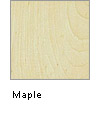 Maple body pictured on a Skylark guitar. Maple will enhance the brightest tones your Alembic
produces. Especially effective for basses that will be playing in a band with heavily distorted guitars, Maple cuts through
like no other. Best paired with electronics that include a low-pass filter, so that you can cut extreme highs if they are unwanted
in certain playing situations. The first Essence basses and the Elan model had Maple as the standard body wood, and it's now an
optional wood for any Alembic instrument.
Maple body pictured on a Skylark guitar. Maple will enhance the brightest tones your Alembic
produces. Especially effective for basses that will be playing in a band with heavily distorted guitars, Maple cuts through
like no other. Best paired with electronics that include a low-pass filter, so that you can cut extreme highs if they are unwanted
in certain playing situations. The first Essence basses and the Elan model had Maple as the standard body wood, and it's now an
optional wood for any Alembic instrument.

|
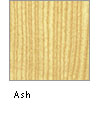 Ash body pictured on an Excel bass. Ash bodies are popular on many brands of bolt-on basses
and guitars, and contributes to the focused midrange that folks who play these instruments enjoy. The effect is the same for
Alembic instruments as well, and is greatest on our set neck models. Ash is found in a great variety of densities, and
this will affect the tone greatly. The more dense, the brighter and snappier the sound, especially in the upper midrange. Ash is the
standard wood for Excel basses, and an optional wood for any Alembic instrument.
Ash body pictured on an Excel bass. Ash bodies are popular on many brands of bolt-on basses
and guitars, and contributes to the focused midrange that folks who play these instruments enjoy. The effect is the same for
Alembic instruments as well, and is greatest on our set neck models. Ash is found in a great variety of densities, and
this will affect the tone greatly. The more dense, the brighter and snappier the sound, especially in the upper midrange. Ash is the
standard wood for Excel basses, and an optional wood for any Alembic instrument.

|
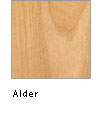 Alder body pictured on a custom bass. Alder is the least bright wood we have available for body
construction. Not to be used if you are looking for a typical Alembic tone, as the highs are reduced and fundamental sustain is
diminished.
Alder body pictured on a custom bass. Alder is the least bright wood we have available for body
construction. Not to be used if you are looking for a typical Alembic tone, as the highs are reduced and fundamental sustain is
diminished.

|
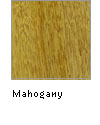 Mahogany body pictured on a Rogue bass. There are so many reasons we love Mahogany. It's always
beautiful. The vast array of figure that is sometimes subtle and other times shocking coordinates with any other wood visually.
It just plain sounds good. Neither overly bright or overly warm, it's influenced by the top or back wood more than other body woods.
It sounds consistent. Even though Mahogany can vary greatly in density, it usually produces a similar tone from instrument to
instrument. It's the body wood of most Alembics and is a part of our signature sound. Never fear, Mahogany is here!
Mahogany body pictured on a Rogue bass. There are so many reasons we love Mahogany. It's always
beautiful. The vast array of figure that is sometimes subtle and other times shocking coordinates with any other wood visually.
It just plain sounds good. Neither overly bright or overly warm, it's influenced by the top or back wood more than other body woods.
It sounds consistent. Even though Mahogany can vary greatly in density, it usually produces a similar tone from instrument to
instrument. It's the body wood of most Alembics and is a part of our signature sound. Never fear, Mahogany is here!

|
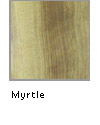 The greenish color of Myrtle isn't the only distinction of this mighty wood from the Pacific
northwest. On an Alembic bass, Myrtle keeps the extreme highs out of the picture and fills the bottom with solid lows. We
compare it to the sound of Mahogany but with less on the top end and slightly less on the lows. Used mainly in Brown Basses
and paired with a warm Mahogany neck, there is no shortage of bottom end.
The greenish color of Myrtle isn't the only distinction of this mighty wood from the Pacific
northwest. On an Alembic bass, Myrtle keeps the extreme highs out of the picture and fills the bottom with solid lows. We
compare it to the sound of Mahogany but with less on the top end and slightly less on the lows. Used mainly in Brown Basses
and paired with a warm Mahogany neck, there is no shortage of bottom end.
|
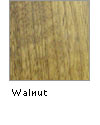 Walnut body pictured on an Essence bass. Walnut is very reactive when used as a body wood.
Instruments we have made with Walnut bodies reveal incredibly subtle fingering techniques. Less bright than Maple, but still with
plenty of highs, Walnut is closer to Mahogany in sound than any other wood we use. However, Walnut's fast attack is slightly less
versatile than Mahogany. When well cast, Walnut can enhance a player's phrasing and fingering, and even be heard enough for the
audience to appreciate.
Walnut body pictured on an Essence bass. Walnut is very reactive when used as a body wood.
Instruments we have made with Walnut bodies reveal incredibly subtle fingering techniques. Less bright than Maple, but still with
plenty of highs, Walnut is closer to Mahogany in sound than any other wood we use. However, Walnut's fast attack is slightly less
versatile than Mahogany. When well cast, Walnut can enhance a player's phrasing and fingering, and even be heard enough for the
audience to appreciate.
|
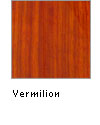 Vermilion body pictured on a Skylark guitar. Stanley Clarke has helped to popularize Vermilion as a
body wood. All his personal Series I basses are constructed with a Vermilion core. It is more dense than Mahogany, and produces an
interesting sound with a slighly brighter tone than Mahogany on the highs. The densely packed cells are interspersed with large cells.
These help the low frequencies to yield a slightly warmer sound than Mahogany. The sonic differences compared to Mahogany are not
glaringly obvious, but carfeul listening reveals their subtlety.
Vermilion body pictured on a Skylark guitar. Stanley Clarke has helped to popularize Vermilion as a
body wood. All his personal Series I basses are constructed with a Vermilion core. It is more dense than Mahogany, and produces an
interesting sound with a slighly brighter tone than Mahogany on the highs. The densely packed cells are interspersed with large cells.
These help the low frequencies to yield a slightly warmer sound than Mahogany. The sonic differences compared to Mahogany are not
glaringly obvious, but carfeul listening reveals their subtlety.
|
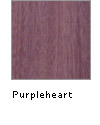 Purpleheart body pictured on a custom Signature Standard bass. Many people are shocked to find that
Purpleheart is naturally a vibrant violet color. As a body wood, it's one of the densest we use. Expect Purpleheart to have a bright
sound without being harsh, and to encourage a good deal of sustain.
Purpleheart body pictured on a custom Signature Standard bass. Many people are shocked to find that
Purpleheart is naturally a vibrant violet color. As a body wood, it's one of the densest we use. Expect Purpleheart to have a bright
sound without being harsh, and to encourage a good deal of sustain.
© 2010 Alembic, Inc.

|
